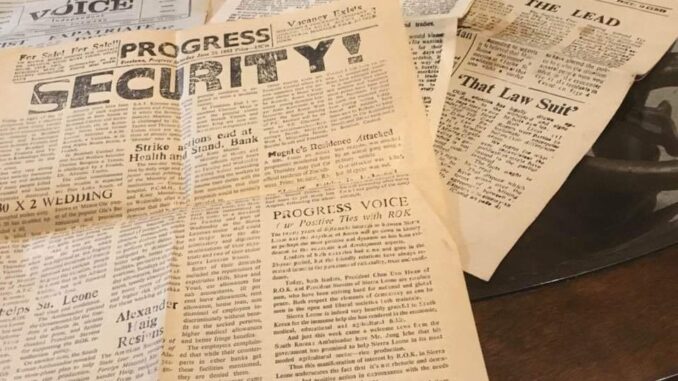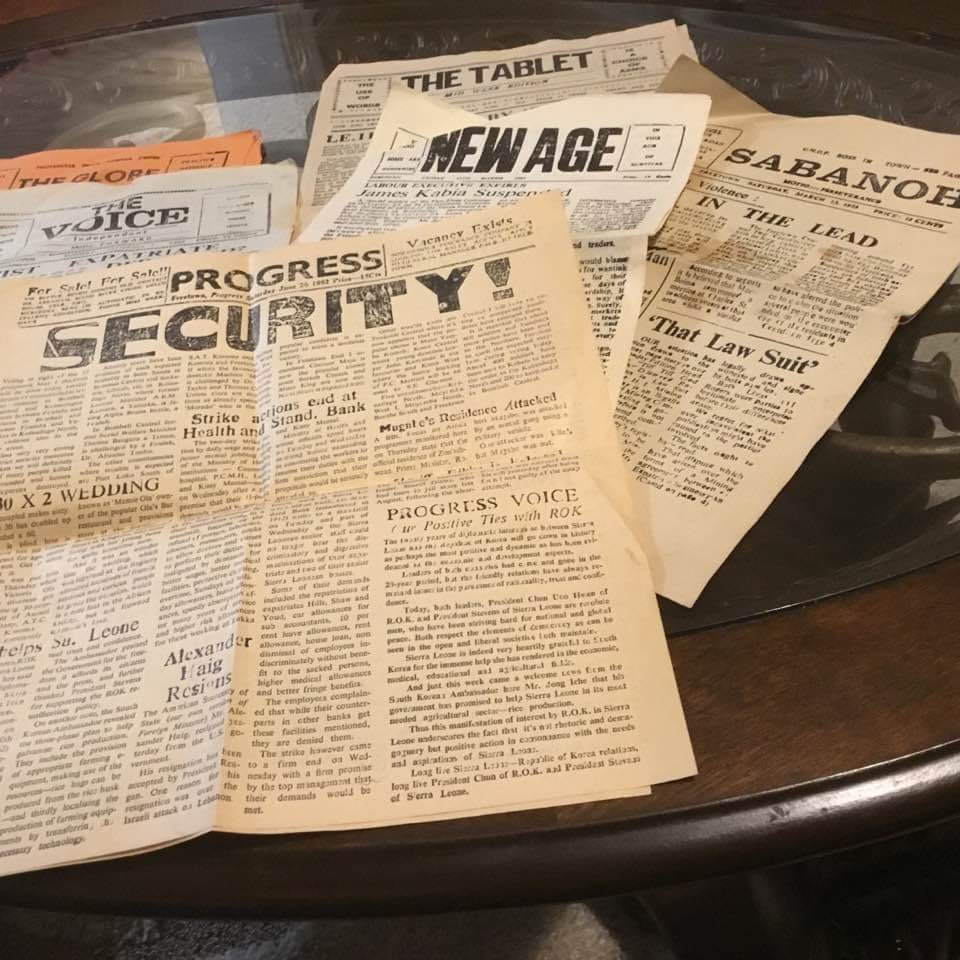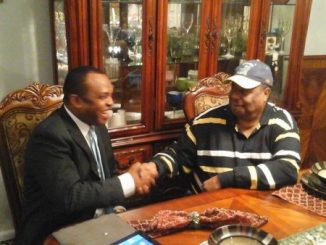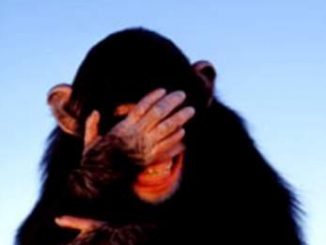
THIS WAS A VERY DIFFICULT ERA IN SIERRA LEONE JOURNALISM
By Kabs Kanu
Thanks to another Peace Corps , Peter Andersen of the famous and pace-setting Sierra Leone Web, a friend of his who stored Sierra Leone newspapers, has sent me copies of some early 1980s papers from our country. The papers include copies of THE TABLET, GLOBE, THE VOICE, SABANOH, THE NEW AGE, PROGRESS, WE YONE etc.
The papers are highly appreciated because like the 1966/67 Daily Mail editions received through another Peace Corps, Gary Schulze, they will help me perfect my desire and commitment to operate from the rich historical background of Sierra Leone Journalism. Unlike some other journalists, whenever I write or talk, I want to do so with a rich infusion of historical facts . This is because you cannot place life and Sierra Leone Journalism in an accurate perspective without knowing the country’s chequered past.
These papers were produced at one of the most difficult periods in the life of our nation. The SUCK AIR had started in earnest after our country staged the 1980 OAU SUMMIT, which exacerbated the economic crisis that had started rearing its ugly head around 1966, after relatively better times in the colonial era.
The state of the nation was reflected in the quality of the newspapers produced in those days. Some could not be called newspapers in the true sense of the word for they were miniature news sheets produced on very inferior newsprint . Printing facilities were bad and inadequate and so the letters of newspapers looked jagged and erratic, with some words or entire sections of stories completely dim and illegible. The papers were palm-sized sheets , with 2 or 3 pages and in some cases only four . There were hardly eight page- newspapers. Even the Daily had started shrinking in size.
We at THE TABLET managed 8 pages and came out twice a week. When we started the TABLET in late 1977, after some of us returned from jail at the Pademba Road Prisons where President Siaka Stevens had incarcerated us, we on the editorial board were Pios Foray, Frank Kposowa, Hindolo Trye, Lamini Waritay, Kabs Kanu , Daba Kallon, Sam Tumoe. We were the originals.
It was a very dangerous period to practice Journalism. Siaka Stevens was complaining bitterly everyday at State House. S.I .Koroma , S.H.O Gborie, a notorious woman – beater, who claimed to walk around with a pistol , and threatening to shoot people, and Alfred Akibo -Betts were threatening us day and night and Sam Metzger, who was a vigorous defender of the APC , was throwing us under the bus when responding to our articles. He interpreted the hidden meanings in our articles as if to get Pa. Shaki more aggravated.
We were young and restless and full of youthful exuberance and unmarried and had no huge responsibilities so we were reckless with our lives. Shaki told me on return from jail at Pademba Road Prisons that I was careless with my life since college days because he used to be sent some of my articles at CHUKS PRESS, which he said he could have used to rusticate me or cancel my scholarship.
He blamed himself everyday for not behaving like Idi Amin, the dictator of Uganda then, by just making some of us disappear. ” When you vanish, who will come before me to ask me any mammy B ( Unprintable ) questions about you or beg me to free you when I did not know your whereabouts ? ” , he told us, released detainees who had been taken to him at State House for him to mouthwash us first before going to our homes. Drinking Whiskey openly and pounding his table at his office now and again, the Pa did not play to insult our mothers. Every tirade was laced with mammy cuss . He even cussed my mother when I corrected him when he could not tell the country Idi Amin was ruling and mistakenly mentioned Tanzania.
Sam Metzger got up from his seat and drove me out of his office when I went to hand in an article I had published against the escalating costs of rent and food in the city, which I wanted him to publish as well in WE YONE . As Jay Willie can testify , Metzger relished fights in those days and would jump on you for a fight, if you crossed his path. He and Jay Willie went to grips often ,because he liked to fight , especially after he had enjoyed his famous Whiskey.
The DAILY MAIL did not come out regularly so it could not be called a daily newspaper. But it had competent staff like Clarence Labor, Babs Kassim, Alhaji Saramady Kabbah, Theo Azu , Khalil Kamara and others. After the 1977 demonstrations, Clarence Labor was fired by Pa Shaki for an editorial he wrote criticizing the government for overreacting to the Hindolo Trye – led students demonstrations . He was replaced by Royston Wright , from the SLBS. Later, he too got fired and Arika Awuta Coker was brought from We Yone to replace him.
There were other papers like Daisy Bona’s FLASH and Rosemond Jones – Waritay’s MIRROR but they were very irregular. E.B. Wallace Johnson had a sports paper called THE STAR but it was also poorly printed .
In those days when I was young and my eyesight perfect, I did not have problems reading them, but today, even with my glasses, I strain a lot to read some of the archived copies . That was how terrible the printing was In those days. Only the Daily Mail carried photos, but the quality was not great.
The most challenging era was between 1971 and 1978 when even the SLPP Unity newspaper had been driven underground and the only three newspapers in the country were the DAILY MAIL , THE NATION (Edited by Sam Metzger since the SLPP lost power in 1966 . He hijacked the party ‘s printing press , which was good, purposely bought by Sir Albert Margai and changed the paper’s name from Unity to the NATION ) . He fell out with junta leader Brig. A.T. Juxon – Smith and was jailed. He was released after the 1968 counter- coup by the Anti- Corruption Revolutionary Movement ( ACRM ) , led by Sgt.Alex Foday Conteh. When Siaka Stevens was restored to power by the National Interim Council ( NIC ) , led by Brig. John Bangura, to whom the ACRM had handed power after a few days, he begged Sam Metzger, who had been a ferocious SLPP media fighter to jump ship and become Editor of WE YONE.
Though the printing was atrocious , if you did a content analysis, however, by the mid -80s , you would find some of these newspapers very interesting– more interesting than many of today’s wishy- washy newspapers. They had some brilliantly written news stories, op/ed articles, editorials and readers’ letters graphically tackling national issues from a serious perspective, that is . They criticized the government. So, those who go around with the idea that the late President Siaka Stevens did not tolerate any form of media criticism are wrong. In his latter years when he himself had started openly taunting Sierra Leoneans for ” Dregging” ( Hurstling ) , he no longer cared. The papers did not go down the gutter like today’s licentious media to deliberately damage the reputation of the government and country, but journalists did criticize government policies , the President, ministers and public officials, though modestly . In fact by mid to late1980s , much of Sierra Leone Journalism entailed bitter attacks on public officials. The NEW SHAFT Newspaper by the late Bunting Davies was guilty of this. It picked on public figures .
The three best eras in Sierra Leone Journalism after Independence came during the Sir Albert Margai, President Joseph Momoh and Dr. Ernest Bai Koroma rules. They nurtured the best democratic atmosphere in Sierra Leone. Momoh cared the least what was written in the papers and some editors like Roy Stevens and Franklin Bunting Davies went overboard. Ernest Koroma did not care a tinker’s damn what was written about him .
What I am trying to say is that at all stages of Sierra Leone journalism, media men had always found a way to criticize the government . Indeed, in the mid-1960s, Sierra Leone was regarded as the FLEET STREET OF WEST AFRICA. We had the freest press then in the region. We had very hard-hitting papers like Awoko, Think , Scope, The Express, Shekpendeh, We Yone, Unity etc. Among the Famous journalists were Sam Short, Sam Hollist, Sam Metzger, Sarif Easmon, Ibrahim Taqi , Lamina Rogers , Julius Cole ( who was really Brima Gbow, and he founded the SLPP newspaper, THE PEOPLE), Ibrahim Taqi, etc. A Northerner , Alimamy Conteh, who published the EXPRESS was the nastiest critic ever of Siaka Stevens and he was later forced to flee the country. He was shot dead in New York in an unrelated robbery incident.
The printing quality of the 1960s newspapers was not that bad and the papers carried more relevant and useful articles than some of our papers today. The printing was an eyesore in some but the writing was excellent because these were well-trained journalists who had worked their way up through the ranks, not young, inexperienced, untrained or badly-trained and immature young people who started calling themselves EDITOR -IN- CHIEF or PUBLISHER, without first learning the trade, especially how to write focused, absorbing and biting op/eds or cover other areas of journalism like writing sports and running columns. In those days, editors apprenticed you to the key journalists for you to learn from them.
The internet and social media have affected journalism adversely. Everybody is now a journalist and quality has been thrown to the dogs. Everything is now about politics. Today, we lack thrilling sports writers, gossip columnists, engaging and incisive editorial writers, etc. We have few op/ed writers who tackles social issues and diverse matters of national interest, other than the SLPP/ APC dysfunctional relationship.
But back to the topic, the quality of journalism was disgraceful in the early 1980s. Not even the brilliance of the editors was able to paper over the cracks of mediocre newsprint and printing or the fact that in the 1980s we had the worst news sheets called newspapers in all of West Africa. They were mini-news sheets as could be seen from the pictures. You could finish reading them in 10 minutes. Things changed in the 1990s and Sierra Leone once again started having papers that could be described as real newspapers.
Today, we have large, colorful and brightly and finely printed newspapers. What our media practitioners need to do is elevate their game and divorce themselves from fake news , salacious character assassination and defamation and obsession with pilitics. If they focus on real news. constructive criticism , and brilliantly-written articles dealing with developmental issues and matters of diverse interest to their readers, they would have moved the game to a higher and better platform. But again, you cannot blame the journalists. Everything has become politicized and readership of articles that do not feature the SLPP and APC are low as we notice when we check our traffic counters in our dashboards. People are more interested in political articles these days.
Looking at many of the newspapers today, there is however hope that journalism will continue to improve in SIERRA LEONE, especially the digital media . But it is yet a long journey, especially for non- internet newspapers, thanks to the internet and social media, which are killing print media softly.




